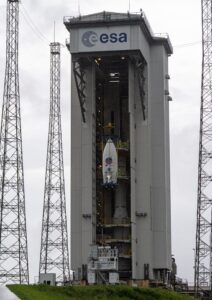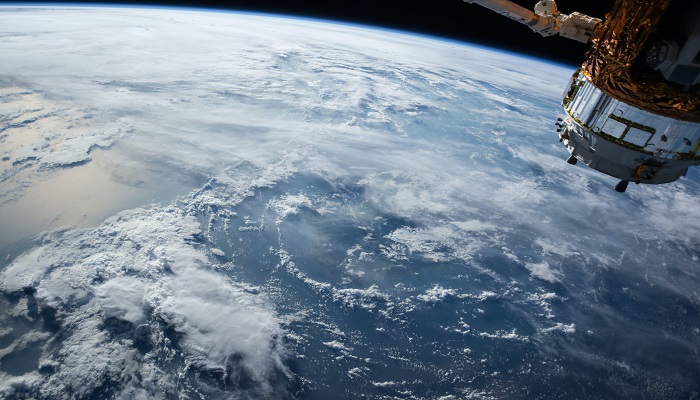We’re taking a break from our trip round SURPRISE cities to travel into space with ESA!
Indeed, Friday 19th June is a day to remember for Earth Observation lovers!
Why? Because the ɸ-sat-1, Europe’s very first artificial intelligence Earth Observation mission, will be launched into orbit. ɸ-sat-1 has been developed by ESA and other European partners and it was presented last September at the ESA ɸ-week. It’s now ready to take off from Europe’s Spaceport in French Guiana, on board the VEGA rocket.
ɸ-sat-1 combines artificial intelligence with latest CubeSat technologies (miniature satellites built up from standardised 10-cm boxes, with a mass of no more than 1.33 kilograms per unit), to improve the quality of images acquired from satellites for Earth Observation purposes.
How? Earth Observation satellites regularly capture a wealth of images from their low-orbit position, sending them to land stations. Once there, images are reviewed and filtered for cloud cover, meaning that a number of the images acquired are not usable. ɸ-sat-1 makes things much easier: the artificial intelligence automatically filters out images with high cloud coverage, so that only usable data are returned back to Earth. This will make the image acquisition and data exchange process more efficient, thus allowing users access to more timely and quality information.

Photo: VEGA Payload Assembly Composite preparing for launch, ESA Facebook
ɸ-sat-1 won’t travel alone to space. The VEGA rocket will also bring into orbit other two new ESA CubeSats: SIMBA and PICASSO. SIMBA (Sun-Earth Imbalance) is a 30-cm long nanosatellite that will turn from Earth to space, to the Sun and back again, to calculate the overall Earth energy budget. PICASSO (PICo-satellite for Atmospheric and Space Science Observations) will use the filtering of sunlight by Earth’s atmosphere to check the health of Earth’s protective ozone layer.
VEGA and its three CubeSat passengers will take off on Friday at 3:51 CEST. Follow the web live streaming on ESA TV!
Cover Photo by NASA on Unsplash

